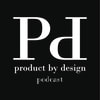|
Becoming data-informed is a critical step for any team and any organization. But to do that, we have to make the data digestible and usable, not just for ourselves, but for those we're working with. Having data is one thing, but being able to make decisions and use it is another.
That's why data visualization is so important. A spreadsheet of raw data is important, but frankly is not nearly as powerful or as a meaningful chart or graph that is distilled from the raw data. Images stick with is. They bring things to life. A chart or graph can show trends or comparisons in a way that a spreadsheet simply cannot. An image can tell a story better than we can in words, whether written or oral. Getting started shouldn't be complicated. You don't need the latest tools, though they can certainly help. Just pulling data into Excel and creating charts to help better understand the information is perfect. Then using data visualization tools is a great next step, whatever those tools are. What is Data Visualization (podcast) - In this Storytelling with Data podcast, they address data visualization and why it is important. It is relatively short, especially if you listen at 2X speed. The tools are less important than gathering the data and creating the visuals. Florence Nightingale is a Design Hero (article) - If you've done any reading about wars, you know that disease has almost always been far more deadly than fighting. But Florence Nightingale gathered the data and showed it visually, among so many other things. Check out this article for some awesome history and more about what she did and why it was so cool. Examples of Data Visualizations - Not all data visualization needs to be amazing for it to tell the story. Like I said above, sometimes you just need to start with a spreadsheet and a chart if that's what you have. But that doesn't mean we can't appreciate the amazing work of visualization that others have done. This post shows some of the coolest data visualizations from last year.
0 Comments
Using OKRs (objectives and key results) can be a superb way to gain alignment across an organization if done correctly. I've been a proponent of OKRs for a while, and have helped implement them at several organizations. I've also seen organizations where we haven't implemented them, and it has left an enormous gap to not have strategic alignment.
Good OKRs and a good OKR strategy are about aligning the business and pushing us further. As John Doerr points out in his book Measure What Matters, the four OKR superpowers are to help us focus, align, track and stretch. It is important to narrow what we're doing to a few key items (I like three, but even fewer are better). For product teams, ensuring we are focused and aligned is critical. Giving this transparency to our organizations, and showing how it aligns with our strategic roadmaps and the work we're doing, adds another tool to the arsenal. OKRs are not perfect - no tool is. They work best when teams are empowered to work on important goals, have good strategic direction, and are supported by good leaders. That may sound simple but it's not. As Marty Cagan points out, many organizations aren't built to get the most out of OKRs. Still, that doesn't mean we can't find success and help move our teams and companies in the right direction through their use. How to combine Objectives and Key Results (OKR) and Agile Product Management? (article) - This is a comprehensive article that dives into many of the nuances around OKRs and applying them to product development. A delightful read. Goals Like Google (podcast) - Just discovered this podcast, but really liked this episode and the insight Cole has on setting OKRs, both personally and within an organization. She lays out the basics of OKRs, how to set them, how to think about them properly, and how to be successful. Beyond the OKR Methodology (podcast) - Another good podcast talking about OKRs and how other teams and companies have implemented them. I enjoy having a diverse perspective, and even conflicting views, because there is no cut-and-paste way to do it right. So understanding the principles and then understanding how others have applied those principles is the best way to find success. One of the most common feelings in the world of product development, whether it is product management, design, business analysis, or engineering, is imposter syndrome. I imagine that imposter syndrome is one of the most common feelings in most high demand fields if we're being honest. The idea that we don't belong because we're not as smart or capable as those around us. Or we have little to offer. And we'll be found out. I love the tweet above. Sahil is the founder of Gumroad, a cool platform for creators if you're not familiar. It really captures my feelings as well because all of us feel like imposters frequently.
For some of us it is because we are generalists in a specialist's world. For others, it is because we interact with so many incredibly intelligent people every day. Still for others, it is because we compare ourselves right now with those who have been doing our role for far longer. Or it may be some combination of these factors among many others. Understanding that we all feel like imposters at various times can help. Understanding that each perspective and experience is unique and critical in product development is also important. We all started somewhere. Muddling along while we learned the ropes. We are all still learning no matter our profession or years of experience. We shouldn't let imposter syndrome hold us back, but let it drive us forward, helping us to become better, understanding that even the best of the best feel like imposters at times. Embrace Your Imposter Syndrome (video) - Even the most successful people, from authors to product leaders to astronauts feel like imposters. But that shouldn't stop us from doing our best work. Because it is often the awkwardness we feel that can help make magic happen. Overcoming the Imposter Syndrome (podcast) - Coming from a technical background into product, or from any other background, brings benefits and drawbacks. Playing to one's strengths and working on one's weaknesses helps bridge the gap. Nobody Knows Nothing (article) - Another great article from a great blogger. While the title feels pessimistic, it is meant to convey the idea that nobody has a monopoly on knowledge (nobody knows nothing) and the inverse (everybody knows something). But he conveys it with more fun anecdotes. The key to building excellent products, at least in my opinion, is understanding your users. And you can't do that if you're not spending time with them, watching how they work, seeing their issues, asking questions, and diving deeper. We can gain this kind of understanding through in-depth research or through periodic, less formal conversations. The key point is that it happens. And the more regularly the better.
One of my favorite stories along these lines comes from the early days of Airbnb when Paul Graham asked the founders where their customers were. They answered they had a few in New York. So he asked them what they were still doing in California. They needed to be in New York knocking on doors, getting to know their customers. So that's what they did. And they went from small startup to major disruptor by better understanding their users. Do Things That Don't Scale - Startups (and products) take off because their founders (and teams) make them take off. They often require a push. That may mean getting people to buy in one by one until you get traction. But that is often what it takes. Democratizing Research (podcast) - Democratizing research is understanding that the world is moving fast so we need to enable teams to react fast. Product teams (and businesses) need the tools to do research to inform decisions. A good listen. Doing User Research (podcast) - Eva and I dive into user research. It's critical for product teams to understand user needs and find out what you don't know. While it would be great to have a dedicated user research team, user research is also the responsibility of product managers and product designers to inform the product design, gather insights, and guide the overall direction. Design thinking may have a lot of definitions, but it is a critical part of product development. The principal focus is understanding who we are creating products for, what their needs and problems are, and how we can solve for them. It puts the focus on the people behind the products, which is important, because we can often get lost in dollars, business value, feature prioritization, costs, technical specs, etc. While these are important, they don't make for splendid experiences.
What is Design Thinking - IDEO really popularized design thinking and human-centered design, so this is a post straight from them on the subject. An enjoyable read. User Experience is Design Thinking - Another good article on the subject. "In essence, the Design Thinking process is iterative, flexible and focused on collaboration between designers and users, with an emphasis on bringing ideas to life based on how real users think, feel and behave." The Business Value of Design (Podcast) - You can't be a business without design. It's a matter of how conscious we are about it. Design thinking is a problem-solving approach that is optimized for dealing with uncertainty, and for that reason is a critical tool in the tool belt. What is Product Design (Podcast) - Eva and I explore product design deeper and discuss its importance to product development. There is a long-standing debate around whether product managers are the CEO of their products. I've generally taken a nuanced stance in that debate, because it depends. Though over the last few years I lean more toward "yes" because I would prefer that everyone look at themselves as owning the products they work on. That includes not just the product managers, but designers, business analysts, engineers, everyone. We own these things together. Whether they succeed or fail. So we should adopt that attitude.
And while I extend this to everyone involved in a product's development, I feel particularly strongly about it with regards to the leadership trifecta - the product manager, the designer and the engineering lead. They form the group that has to ensure a product's success. In the book Extreme Ownership, Jocko Willink sums it up nicely: "Extreme Ownership. Leaders must own everything in their world. There is no one else to blame." Good links/articles/podcasts 6 Ways the Product Manager is the CEO of the Product - I wrote this several years ago, and it stands up very well still. Product managers need to own many aspects of their products, from being experts in how it works to empathizing with users and stakeholders. CEO of the Product Revisited - "The key is that, like the CEO, the product manager needs to have a solid understanding of the many aspects of the business, and assimilate all of this information to make informed decisions." It's not a simple thing. If you think it is, take another look. How to be the Best Product Manager You Can - I listened to this podcast episode recently. Manu Prasanna, a senior PM at VMware, touches early on the idea of being the CEO and taking ownership of the product. He also talks about being interesting and playing to your strengths. What is Product Management - In our Product by Design podcast, Eva and I dive into product management, what makes a good product manager, some of the differences between product ownership, project management, and product management. |
Archives |



 RSS Feed
RSS Feed
